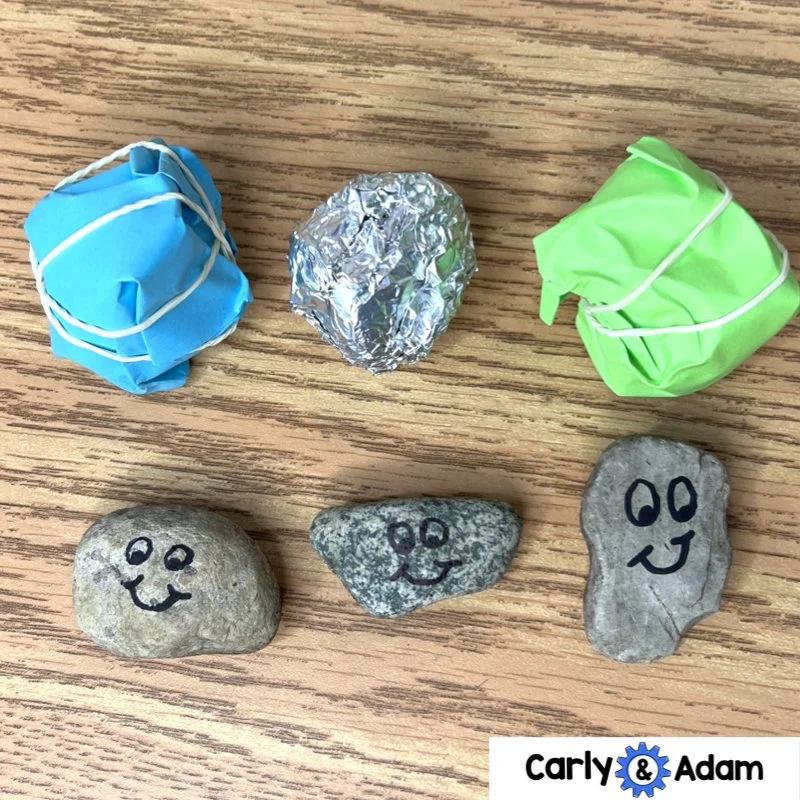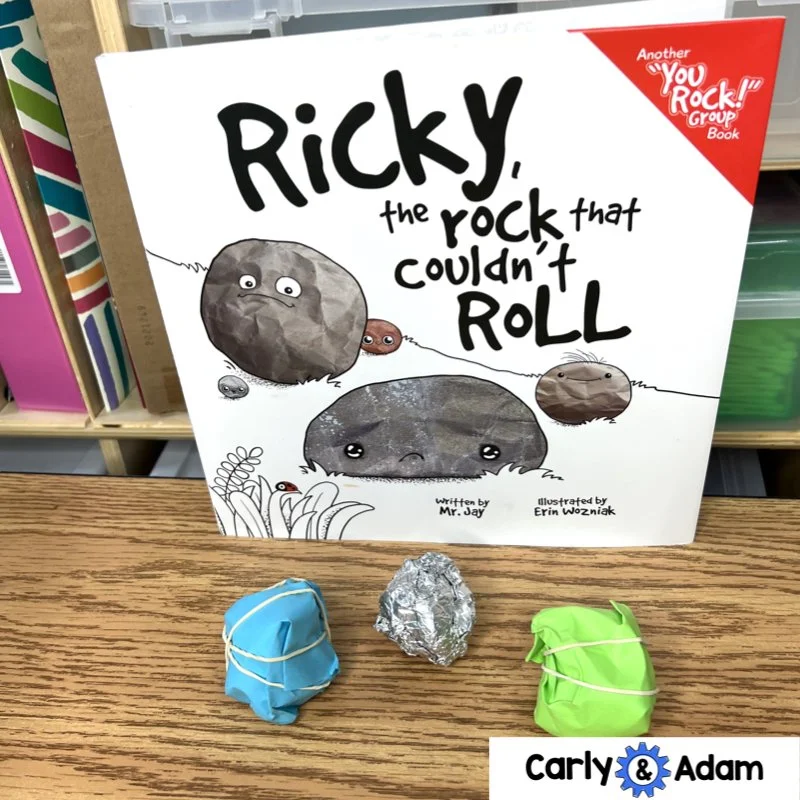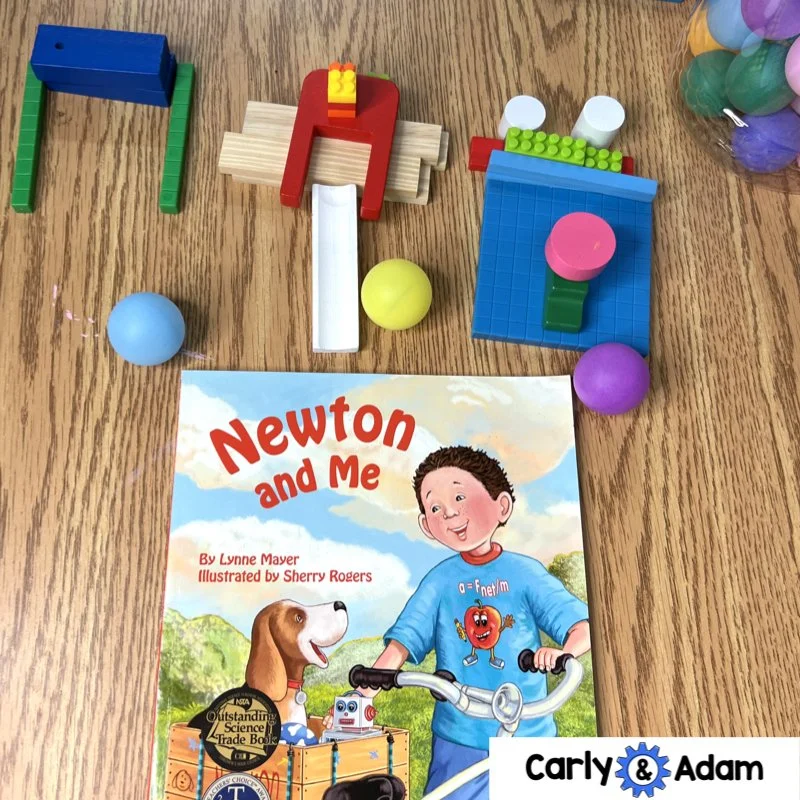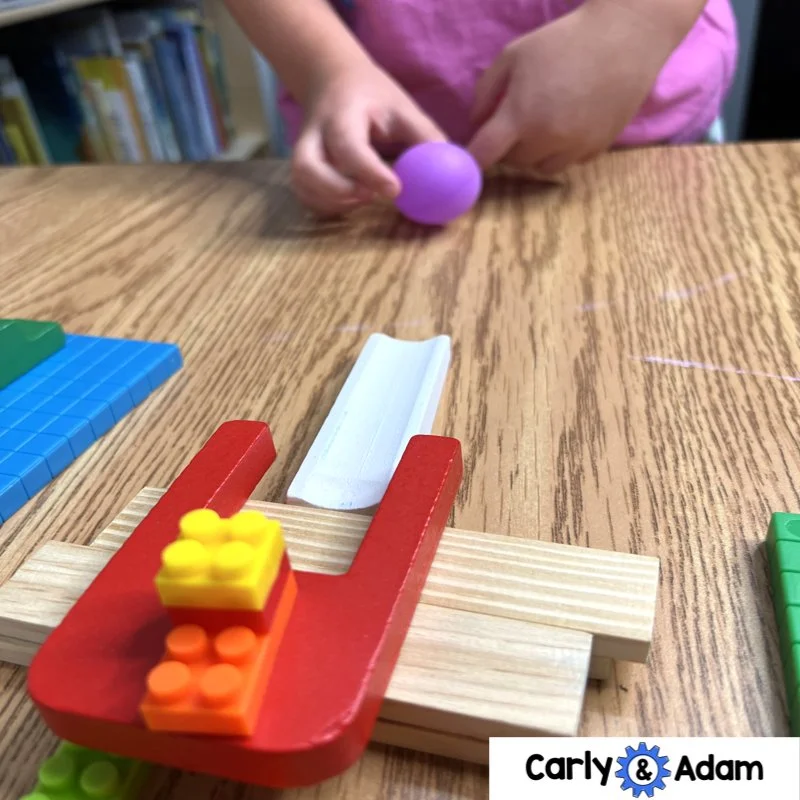The Best Books and STEM Challenges to Teach Push and Pull in Kindergarten
Great read aloud selections help to engage young learners and introduce them to interesting topics. This is particularly true in kindergarten when teachers gather students together to listen to stories each day.
This post will share two great children's books that support STEM learning as you introduce important science topics to your students. Books are a great way to get students excited about STEM, even more so when we offer experiences that allow kids to investigate ideas in science.
In alignment with the Next Generation Science Standards (NGSS), kindergarten students will learn about the concept of push and pull. They will explore how things move and figure out how force impacts different objects.Through hands-on activities, they will investigate how they can change the speed and direction of objects through science.
Ricky the Rock that Couldn't Roll
This picture book introduces physics to young readers while also exploring the importance of friendship and inclusion.
Summary:
In the story a rock named Ricky struggles to fit in. A group of rocks have gathered to play together. They decide they are going to roll around on their favorite hill. The group realizes that Ricky is unable to roll with them, because he is flat on one side.
Ricky’s friends work together to find a way to help him roll, so that he can play and have fun, too. They try some different solutions, but they don’t work. Finally, one of the rocks comes up with a way to make Ricky round so he can roll like the rest of them.
STEM Challenge:
For this challenge, students will design a way to help Ricky the rock roll just like his friends did in the story. Students will think about why Ricky wasn’t able to roll. Since he wasn’t a round shape, it wasn’t easy for him to roll. With some help, a solution is created to solve that problem. Students will consider what shape Ricky will need to be in order to roll. (round, circular/sphere shaped)
Give students a rock (or have them find a rock outside that doesn’t roll very well). Challenge them to design a way to help the rock to roll. Provide students with a variety of materials (paper, foil, tape, rubber bands, or other available materials) to help their rock roll.
Students will use the engineering design process to create and test their designs.
Ask: How can I make my rock roll?
Imagine: What are the best materials to make the rock roll?
Plan: Sketch out a plan. Include the materials that you want to use.
Create: Attach your materials to the rock.
Experiment: Test your design and see how it works.
Improve: How can you fix/improve your design?
As a class, take a look at all of the design solutions. Talk about why certain designs worked well and why others didn’t. Encourage students to share their personal reflections on the STEM challenge.
Get the full lesson plan on Teachers Pay Teachers or in the STEM Teachers Club Membership.
Newton and Me
Told in rhyme, this story about a boy and his dog introduces important science ideas to young readers.
Summary:
While outside playing with his dog, Newton, a boy discovers how force and motion are happening through everyday activities. These two friends go on an adventure as they throw a ball, pull a wagon, and ride a bike, learning about physics as they go. Readers will find out that Newton’s Laws of Motion describe things that happen every day, and learn how forces affect different objects around them.
STEM Challenge:
Students will work in small groups to complete this physics challenge. They will investigate speed by choosing different classroom surfaces to test. They will roll a ball on different surfaces and record their speed (slow, medium, fast). Just like in the story, they will learn that a bumpy, rough surface or a smooth surface will change how an object moves.
As a class, discuss which surface will create the fastest or slowest speed. Once students roll their ball across the different surfaces, they will record their findings. Then, challenge them to change the direction of the ball.
What things get in the way and change how objects move? Students will use blocks (wooden planks, dominoes, place value blocks, building bricks, etc.) to build a structure that will change the direction of their ball.
Students will state their hypothesis and use the scientific method to investigate this topic.
Purpose: What can I design to change the direction of the ball?
Research: Explore the available materials and decide what you will use.
Hypothesis: Make a prediction about what you think will happen.
Experiment: Roll the ball towards your structure
Analysis: What happened? Why?
Conclusion: Record your findings.
Once students have selected their materials and designed a method to change the direction of their ball, have them test their design. Encourage students to share their successes and failures in this design challenge.
Get the full lesson plan on Teachers Pay Teachers or in the STEM Teachers Club Membership.
Let’s Roll!
Both of these books introduce science concepts to students in a fun and hands-on way. Students will enjoy the stories and the opportunities to create and experiment with different materials.
Complete lesson plans, along with lots of other resources can be found in our membership. The membership give you access to hundreds of NGSS-aligned STEM challenges.
We hope you have found this blog post helpful. To stay connected with Carly and Adam's teaching tips and classroom freebies be sure to follow us on Facebook, Pinterest, Teachers Pay Teachers, and subscribe to our blog!






